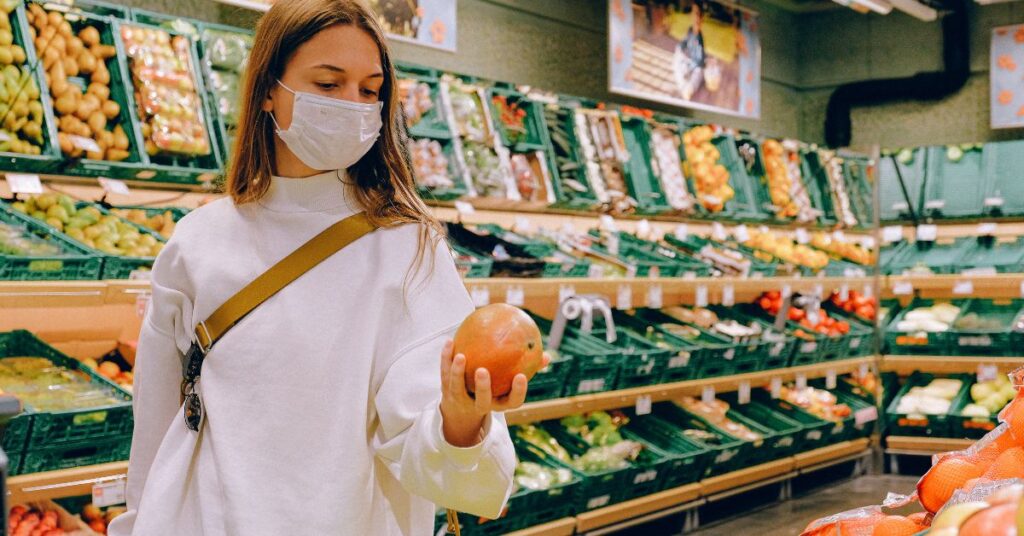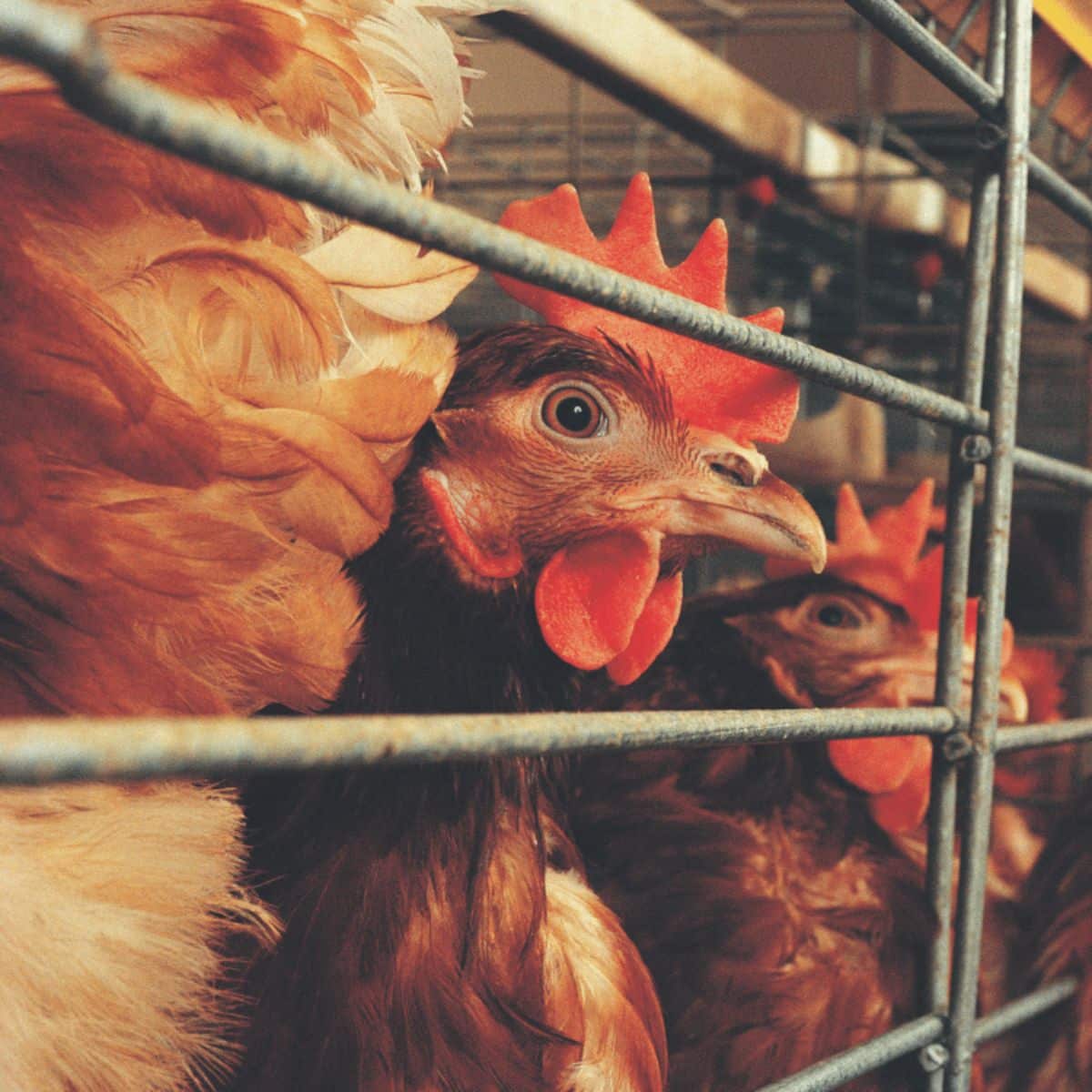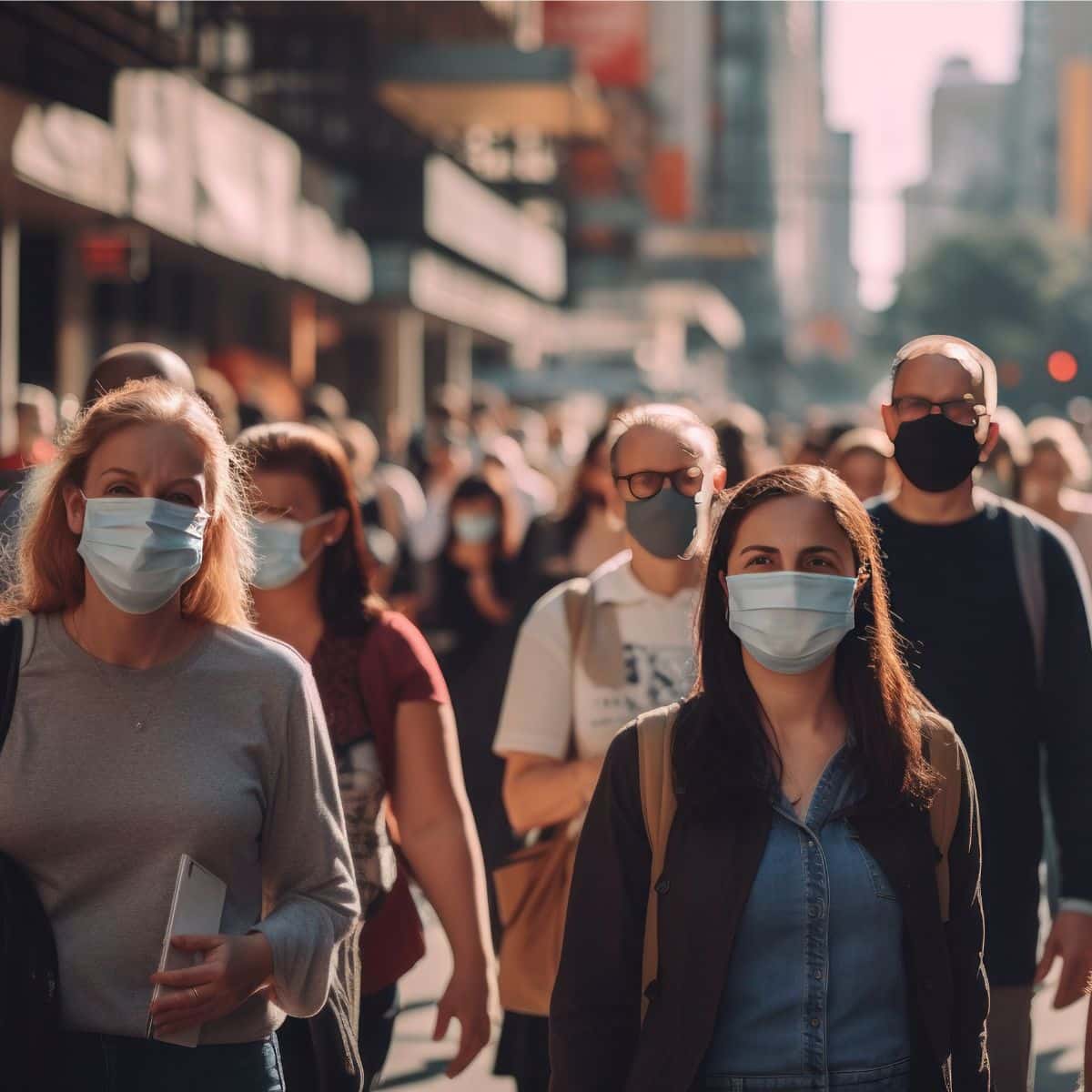

Industrial animal food production, especially chicken, places humanity at severe risk of a deadly pandemic. For example, the earliest reported outbreaks of H5N1 influenza were in poultry operations in China and Hong Kong in the 1990s.[1] H5N1 now circulates in wild bird populations and has spread to numerous mammal species.[2] With a growing number of cases reported worldwide, it is already classified as a panzootic.[3] It is up to 60 percent lethal to humans, making it many orders of magnitude more lethal than the 1918 influenza pandemic that killed 700,000 people in the US and 50 million worldwide.[4][5]
Even if this 60 percent fatality rate turns out to be inflated once unreported cases are taken into account, H5N1 reaching pandemic form with direct transmission between humans—as numerous experts warn could happen—would easily be one of the deadliest events in human history.[6] More than one billion people could die; it would shut down society for years, if not longer. The case fatality rate of COVID-19, for comparison, is only about one percent.[7]
The good news is that we can prevent this catastrophe by eliminating the risks. That means eliminating or substantially modifying industrial animal agriculture operations, because those facilities are where H5N1 is most likely to evolve into pandemic form.
This situation also perfectly illustrates the harmful nature of current economic and political systems that unintentionally compel businesses to degrade the environment and society by requiring companies to prioritize shareholders’ returns over the well-being and survival of humanity. In the Global System Change books, I provide a whole system approach for evolving human systems and society into sustainable forms, emphasizing the corporate and financial sectors.
In the fourth volume of the series, Sustainable Food Production and Diet, I discuss the many problems caused by industrial animal and crop production. The book describes how switching to a whole food, plant-based (WFPB) diet is usually the single most powerful action that individuals can take to improve their health, extend their lives, lose weight, protect the environment, relieve global hunger, reduce animal cruelty, and prevent severe pandemics.
This article discusses the links between industrial animal operations and severe pandemics, how flawed systems compel companies to mislead the public about pandemic risks, and the systemic and dietary changes needed to protect humanity.

Influenza has been infecting warm-blooded animals, including humans, for hundreds if not thousands of years: pandemics have occurred approximately every 35 years for the past 500 years.[8] Like all viruses, influenza viruses evolve to protect themselves. For example, highly pathogenic avian influenza (HPAI) cannot evolve easily in outdoor flocks because it would be suboptimal for the virus: when viruses kill too quickly, they cannot spread to other carriers.[9] On the other hand, indoor industrial poultry production provides a nearly perfect environment for the evolution of HPAI. The evolution of HPAI coincides with the expansion of industrial poultry production.[10]
Industrial broiler (meat) chicken production often involves concentrating 20,000–30,000 genetically similar, immune-compromised birds in a shed. Egg-laying hen operations frequently confine over 100,000 hens per shed, often in battery cages that allow little room to move. Chickens are packed together with little sunlight or fresh air. Beaks and toes are often removed to prevent injury during fighting. Birds live among a growing amount of their own waste. Ammonia and other noxious chemicals from feces burn chickens’ bodies and lungs and weaken their immune systems, making them especially susceptible to viruses. In these environments, viruses maximize their well-being by evolving into deadly forms like HPAI, which would not be able to sustain itself in wild flocks.
As of October 2021, there have been nearly 3,000 H5N1 poultry outbreaks in dozens of countries. More than 77 million birds have been culled to prevent the spread of the virus.[11]
Companies move birds indoors to lower the risk of infections from wild birds reaching their chickens, a practice that raises profits but increases pandemic risks: even after chickens have been confined indoors, viruses are still able to enter and exit supposedly biosecure indoor poultry operations through vectors including rodents, bugs, small mammals, air, water, feed, humans, equipment, foundation cracks, and building leaks. Because the birds are intensively confined and so immune compromised, they are highly susceptible to any infection that does get in.
Although H5N1 does not easily move from wild birds to humans, the viral receptors of chickens make them more likely culprits for spreading infections.[12] As a result, poultry is the primary H5N1 bridge to humans. The record of cases confirms this: the majority of reported human cases result from the recent handling of infected poultry.[13]
Ian Barr, Deputy Director of the World Health Organization (WHO), has compared these viruses to “ticking time bombs.”[11] For more on the dangers of bird flu, I recommend Dr. Michael Greger’s excellent book Bird Flu: A Virus of Our Own Hatching.[14] The book provides over 3,000 references and cites numerous other experts who discuss the grave risk of an H5N1 pandemic.

Chicken companies, their managers, and the politicians who accept money from them may not intend to harm society. They may even think that providing inexpensive chicken is benefiting society. But flawed systems often compel them to mislead the public about pandemic risks.
For example, they may blame wild birds for H5N1, ignoring that the virus would not have evolved to its current form were it not for industrial poultry operations. The UN Food and Agricultural Organization said, “We are wasting valuable time pointing fingers at wild birds when we should be focusing on the root causes of the epidemic spread which [. . . include] farming methods that crowd huge numbers of animals into small spaces.” The WHO blames the emergence of H5N1 on “intensive poultry production,” and the director of the Consortium of Conservation Medicine said, “The global poultry industry is clearly linked to avian influenza [H5N1]. It would not have happened without it.”[14]
Chicken companies also often downplay the risk of bird flu reaching pandemic form and suggest that their operations are well covered by existing biosecurity measures.[15] This is a deadly mistake. Once H5N1 reaches pandemic form, it will almost certainly be too late to stop its rapid spread, and corporations are not likely to self-impose regulations stringent enough to ensure security. Current vaccines and antiviral drugs might not work against pandemic H5N1. Even if they do, many citizens will not have access to these drugs during a pandemic, even in developed countries. As a result, we must have zero tolerance for an H5N1-type pandemic.
The most important action needed to protect humanity is to eliminate or substantially modify industrial poultry (and, to a lesser extent, pig) operations. In countries where businesses substantially influence the government, such as the US, it is unlikely that politicians will bite the hand that feeds them by restricting industrial animal production. However, people can reduce the pandemic risk by raising public awareness and eliminating chicken and egg consumption.
Flawed systems enable chicken companies to externalize much of the cost and risk of industrial chicken production onto tax-paying citizens. If companies were held fully responsible for the risks and costs they impose on society, chicken would be a far more expensive product. Forcing citizens to act as the guarantors of business (by covering its costs and risks) is socialism, not capitalism.
So many before us have risked their lives to protect future generations. We should at least be willing to give up a particular food to protect current and future generations from potentially the greatest threat facing humanity. Choosing from the many delicious plant-based chicken alternatives would reduce severe pandemic risks—yet another benefit of adopting a WFPB diet.
The consequences of an H5N1 pandemic would be devastating. We should not place humanity at severe risk by continuing industrial chicken operations that intensively confine birds in their own waste. We must not play chicken with industrial chicken.
Copyright 2025 Center for Nutrition Studies. All rights reserved.